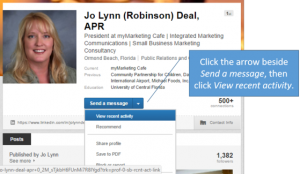
When it comes to positioning (and getting your message across), most B2B sales organisations face either a crowded or a barren landscape. If you’re in an established market, you need to find a way of standing out from a crowd of competitors, many of whom probably have significant marketing budgets.
If you’re trying to create a new market, you’re faced with the challenge that your target audience may not recognise the category that you’re trying to create, nor regard the challenges you are seeking to address as being relevant to them.
Either way, without a distinctive message delivered in a distinctive manner, you’re going to struggle to break through with your communications…
Crowded markets tend to suffer from a deluge of marketing messages and themes, many of which use similar language, techniques, and tactics. And when every vendor is saying something similar, your audience will probably notice the one that is shouting the loudest with the largest budget.
Nascent markets, on the other hand, can sometimes suffer from a lack of credibility in their early stages of evolution. The challenge here can simply be to draw your potential audience’s attention to the issue, or persuade them why a new and different approach is required.
LEAD WITH THE PROBLEM, NOT THE PRODUCT
But in both cases – and particularly in complex B2B sales – basing a message around product capability tends not to be particularly effective. Whether in established or nascent markets, potential prospects are far more interested in what you can help them achieve than what features or functions your products or services can boast.
This has some important implications: your positioning must be based on a clear understanding of what problems you are best able to solve for your prospects, how they can recognise the symptoms that will cause them to take action, and what their vision of a solution needs to include.
It should be obvious: if you haven’t yet engaged your prospects at the problem level, they are going to struggle to recognise the need to implement any solution, let alone be open to messages about why your product or service might be superior to others.
And if your prospects have already recognised the problem you’ve chosen to target, then it’s critically important that you establish how and why your approach to solving it is distinctively different – long before you start to claim that your approach is better.
DIFFERENT BEFORE BETTER
“Elevate the problem before you promote your solution” and “show how you are different before you prove why you are better” are two critical mantras when it comes to positioning technology-based solutions – and they apply whether you’re selling into mature or nascent markets.
But the nuances need to be different: if you are positioning into an established market and a recognised problem, you should seek to identify and elevate some previously unrecognised or undervalued consequences or implications – in other words, you should seek to solve more profound (and ultimately more valuable) problems than your competitors.
And if you are positioning into a nascent market where you cannot assume that your audience will initially recognise the importance of the problem you seek to solve, you may need to start by drawing your prospect’s attention to some previously unrecognised or misdiagnosed symptoms at the same time as establishing the negative value associated with sticking with the status quo.
CHALLENGING EXISTING PERCEPTIONS
In both cases, your messages must have the effect of challenging existing perceptions, and helping potentially well-qualified prospects to recognise the need for change. In any complex B2B sales environment and in particular where the solution is a discretionary purchase (where the prospect could and often does choose to stick with the status quo), selling is essentially an exercise in change management.
Getting the messaging right is just the first step in successful positioning. I’ve seen too many instances where a piece of provocative content stimulates interest that is then wasted because the sales person can’t wait to promote their solution rather than sticking with the problem and developing the case for change.
CONVERSATIONS ARE CRITICAL
In any complex sale, the subsequent sales conversation has far more ultimate impact than the initial marketing message. No matter how compelling and well-differentiated that core message might be, it will be wasted unless the sales person is able to adapt, tune and tailor the essence of the message to relate to the particular customer’s specific circumstances.
Here’s a simple checklist that might help you ensure that your positioning is enabling you to stand out from the crowd:
- Have you clearly identified the critical problem or problems that can confidently claim to solve better than any other option available to your customers?
- Have you clearly identified the potential symptoms, implications and consequences of those problems?
- Are you able to make a compelling case for change that will persuade your prospects of the need to take action?
- Can you clearly identify the common demographic, technographic, firmographic and situational characteristics of your most promising potential customers?
- Are you able to identify the typical roles you need to be targeting as potential change agents within these target organisations?
- Can you clearly and credibly establish what sets your approach to solving the problem apart from all the options the prospective customer might consider?
- Have you coached, equipped and enabled every member of your sales organisation to adapt, tune and tailor the message to their particular customer’s specific circumstances?
- Are your sales people all able to confidently articulate your uniquely relevant value in the context of each customer’s specific situation?
- Have you managed to avoid over-using the common buzz-words and phrases that are typically associated with your category of solution?
- Can you distil the essence of your differentiated positioning into a short phrase, a single sentence, a short paragraph and a more detailed description?
If you can master all of the above, you’ll be well on your way to mastering successful positioning – and you’ll be initiating many more of the right sort of customer conversations, and generating many more well-qualified sales opportunities.
But if you can’t claim to have addressed all these issues, your current messaging and positioning almost certainly leaves a lot to be desired…
Business & Finance Articles on Business 2 Community(99)
Report Post







